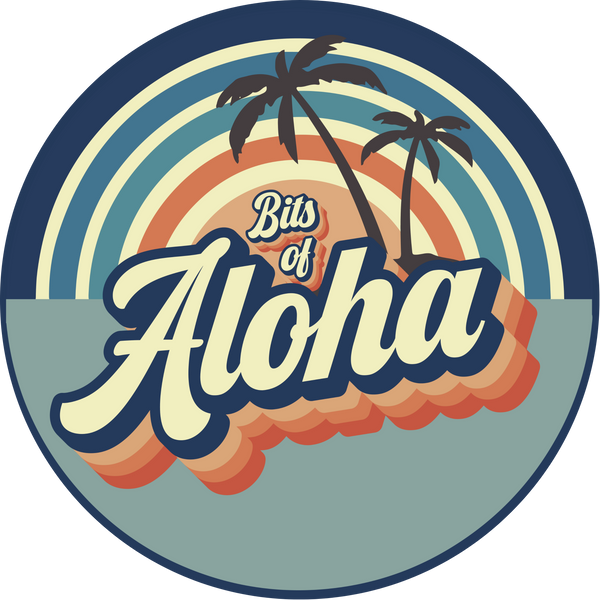
Hurricane Season in Hawaii
Share
Hurricane Season in Hawaii: What You Need to Know
Hawaii is world-renowned for its idyllic beaches, swaying palms, and endless summer vibes—but nestled in the Pacific, the islands are not immune to the threat of hurricanes. While direct hits are rare, hurricane season in Hawaii brings real risks and annual reminders to stay alert and prepared.
In this guide, we explore everything you need to know about Hawaii’s hurricane season: when it is, what it means for residents and visitors, how it has shaped island history, and how to be prepared.
When Is Hurricane Season in Hawaii?
The official hurricane season in Hawaii begins on June 1 and ends on November 30. These dates align with the broader Central Pacific hurricane season, which covers the region between 140°W and the International Date Line.
The season typically peaks in August and September, when ocean temperatures are warmest, creating ideal conditions for tropical storm development.
Why Hawaii’s Hurricane Risk Is Unique
Hawaii’s location in the central Pacific makes it relatively isolated from the hurricane hot zones found in the Atlantic or Western Pacific. However, it remains vulnerable to tropical cyclones that originate off the coast of Mexico or further east. These storms can strengthen as they approach Hawaii, or weaken due to cooler ocean currents, increased wind shear, or dry air masses near the islands.
Key challenges include:
- Limited evacuation options: As an island state, residents can’t simply drive inland.
- Inter-island logistics: A hurricane’s impact on one island can ripple across the state due to shared supply chains.
- Tourist volume: Hawaii sees over 9 million annual visitors, many of whom may be unfamiliar with hurricane safety.
Notable Hurricanes and Near Misses in Hawaii’s History
Though major hurricanes rarely strike Hawaii directly, several powerful storms have left lasting marks or served as near-miss wake-up calls.
Hurricane Iniki (1992) – A Direct Hit on Kaua‘i
The most destructive hurricane in Hawaii’s recorded history, Hurricane Iniki slammed into Kaua‘i on September 11, 1992, as a Category 4 storm with winds topping 140 mph.
- Damage: $3.1 billion in damage (over $6 billion today adjusted for inflation)
- Fatalities: 6 deaths
- Aftermath: Widespread destruction to homes, infrastructure, and power grids; recovery took years and reshaped how Hawaii prepares for storms.
Iniki developed south of the Hawaiian Islands and was originally forecast to pass well to the west. Instead, a sudden northward turn caught many off guard. While O‘ahu and Maui saw limited damage, Kaua‘i bore the brunt.
Hurricane Lane (2018) – A Record-Breaking Soaker
Hurricane Lane never made landfall, but in August 2018, it approached within 150 miles of the Big Island and stalled offshore—dumping historic rainfall totals.
- Rainfall: Over 50 inches in some areas of East Hawai‘i Island
- Impact: Widespread flooding, landslides, road closures, and evacuations
- Legacy: Lane became Hawaii’s second-wettest tropical cyclone in history.
Hurricane Douglas (2020) – A Close Shave
In July 2020, Hurricane Douglas passed dangerously close to multiple islands. With winds near 90 mph, it came within 30 miles of O‘ahu’s north shore, narrowly avoiding landfall.
The storm skirted the islands without causing major destruction, but it served as a vivid reminder of how narrowly disaster can be avoided—and how essential preparation is, even when a direct hit isn’t forecast.
What Hurricane Season Means for Hawaii
Even without a direct hurricane strike, tropical storms bring serious hazards:
- Flash flooding: Torrential rains can overwhelm drainage systems, especially in steep or urban areas.
- High surf and storm surge: Coastal areas, especially on east- and south-facing shores, are vulnerable.
- Power outages and supply disruptions: Even minor storms can knock out power and delay shipments of food and fuel.
For locals, hurricane season is a reminder to restock emergency kits, review evacuation plans, and stay tuned to forecasts. For travelers, it’s about staying flexible and aware of changing weather.
Tips for Hurricane Preparedness in Hawaii
1. Stay Informed
Follow the Central Pacific Hurricane Center (CPHC) and National Weather Service (NWS) Honolulu office for updates. Sign up for local emergency alerts.
2. Build a 14-Day Emergency Kit
Unlike mainland locations, Hawaii’s supply chain is heavily reliant on ships and air freight. Authorities recommend a 14-day emergency supply of:
- Non-perishable food
- Drinking water (1 gallon per person per day)
- Flashlights, batteries, first aid, medication
- Phone chargers, cash, and essential documents
3. Secure Your Home
Trim trees, secure loose outdoor items, and check roof and window integrity. Flood-prone homes should have sandbags or other barriers ready.
4. Have a Communication Plan
Cell service may be disrupted. Establish a check-in system with friends or family and keep important contact info written down and accessible.
Hurricane Season and Travel to Hawaii
For travelers, hurricane season in Hawaii doesn’t mean you should cancel your vacation. But it does mean staying flexible and informed.
Travel tips:
- Book travel insurance that covers weather-related cancellations.
- Check weather forecasts regularly in the days before and during your trip.
- Know your accommodation’s emergency plan—most hotels have procedures for storms.
- Avoid risky activities (like hiking in remote areas) when a storm is forecast.
Most of hurricane season is sunny, beautiful, and storm-free—but a proactive mindset ensures that if weather does shift, you're ready.
Final Thoughts
While Hawaii is a paradise year-round, hurricane season brings a yearly reminder of the islands’ vulnerability and the power of nature. With preparation, awareness, and respect for the elements, both residents and visitors can stay safe and enjoy all that Hawaii has to offer—even during storm season.
Whether you're living in the islands or planning a vacation, understanding Hawaii’s hurricane season means fewer surprises—and more aloha.
